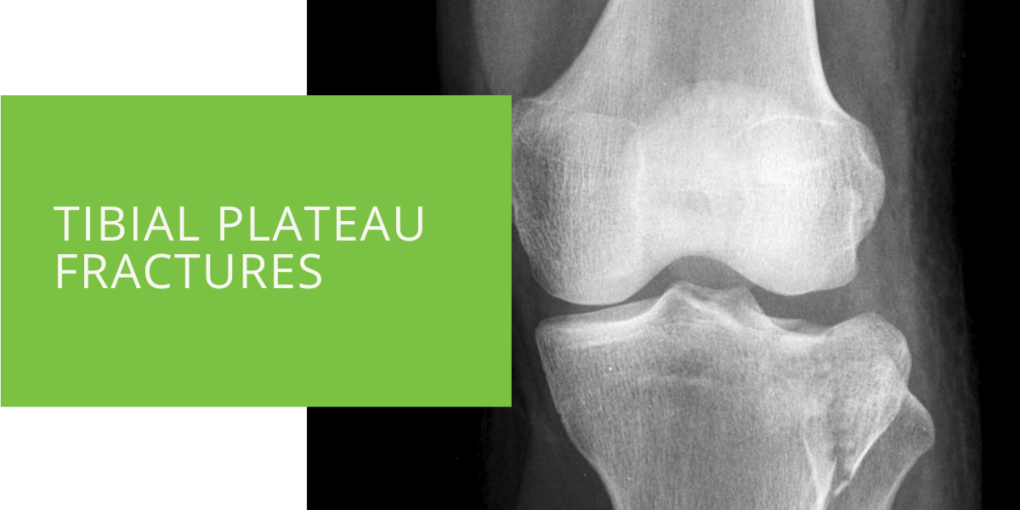Understanding Tibial Plateau Fractures
Tibial plateau fractures, though relatively uncommon, can have significant consequences for mobility and joint health. These fractures occur at the top of the tibia, the shin bone, near the knee joint. The tibial plateau is crucial for stability and weight-bearing in the knee. Understanding the symptoms, treatment options, and recovery process is essential for anyone affected by or at risk of this type of fracture.
Key Takeaways
- Tibial plateau fractures can cause intense pain, swelling, and difficulty bearing weight on the affected leg, requiring prompt medical evaluation.
- Diagnosis often involves X-ray examination and classification based on fracture patterns, such as the Schatzker classification system.
- Treatment may include non-surgical approaches like RICE therapy and immobilization or surgical intervention with internal fixation techniques tailored to the severity and displacement of the fracture.
Symptoms of a Tibial Plateau Fracture
Tibial plateau fractures typically present with key symptoms that indicate potential damage to the knee joint and surrounding structures. The most common symptoms include intense pain around the knee joint, swelling and bruising in the affected area, difficulty bearing weight on the injured leg, limited range of motion in the knee joint, and visible deformity or misalignment of the leg. These symptoms can vary depending on the severity and type of fracture, and prompt medical evaluation is crucial to prevent further damage and ensure appropriate treatment.
Diagnosis and Classification
X-Ray Examination
To confirm a suspected tibial plateau fracture, medical professionals will often perform an X-ray examination. X-rays can reveal the presence of a fracture and help determine the severity and type of fracture. X-rays provide detailed images of the bones, allowing orthopedic specialists to assess the extent of the fracture and plan the most appropriate course of treatment.
Schatzker Classification System
One commonly used classification system for tibial plateau fractures is the Schatzker classification. This system categorizes fractures based on the specific patterns of bone displacement and soft tissue involvement. The Schatzker classification helps orthopedic surgeons determine the best approach for treating fractures and predicting potential complications.
Complications Associated with Tibial Plateau Fractures
Tibial plateau fractures may lead to various complications, including the risk of compartment syndrome, a serious condition characterized by increased pressure within the muscles and nerves of the affected limb. Compartment syndrome can compromise blood flow and nerve function, leading to tissue damage and potentially permanent disability if not promptly treated. Other complications may include the potential for post-traumatic arthritis due to damage to the joint surface and nerve and blood vessel damage, which can impair sensation and circulation in the affected area.

Treatment Options
Non-Surgical Approaches
- Rest, Ice, Compression, Elevation (RICE): Initially, conservative measures such as RICE therapy may be recommended to reduce pain and swelling. RICE therapy helps alleviate discomfort and inflammation in the early stages of healing, promoting a more comfortable recovery process.
- Immobilization: In less severe cases, immobilization with a brace or cast may be sufficient to allow the fracture to heal. Immobilization helps stabilize the fracture and prevent further displacement of the bone fragments, allowing the body's natural healing processes to occur.
- Physical Therapy: Physical therapy exercises can help restore strength, flexibility, and range of motion in the knee joint. Physical therapy is crucial in rehabilitation, helping patients regain functional mobility and reduce the risk of long-term complications such as joint stiffness and muscle weakness.
Surgical Intervention
In cases where the fracture is severe or displaced, surgical treatment may be necessary. Surgical options may include:
- Internal Fixation: This involves the use of screws, plates, or other devices to stabilize the fractured bone fragments and promote healing. Internal fixation provides stability to the fracture site, allowing for the optimal alignment of the bone fragments and facilitating the healing process.
- Bone Grafting: In some cases, bone grafts may be used to fill in gaps in the bone caused by the fracture. Bone grafting helps promote bone healing and regeneration, particularly in severe bone loss or damage.
Recovery and Rehabilitation
Recovery from a tibial plateau fracture can be a lengthy process, requiring patience and dedication to rehabilitation. Physical therapy is often a crucial component of recovery, focusing on:
- Strengthening the muscles around the knee joint
- Improving range of motion
- Restoring functional mobility Physical therapy exercises are tailored to each patient's specific needs and may include strengthening exercises, stretching, and balance training to optimize recovery and minimize the risk of complications.
Conclusion
Tibial plateau fractures are serious orthopedic injuries that can significantly impact a person's quality of life. At ePodiatrists, we understand the challenges associated with these fractures and are committed to providing expert care and support to our patients throughout their recovery journey. If you or a loved one has sustained a tibial plateau fracture, don't hesitate to schedule an appointment with our experienced team for personalized evaluation and treatment. With timely intervention and comprehensive treatment, we can help you achieve the best possible outcome and regain confidence in your mobility and joint health.

